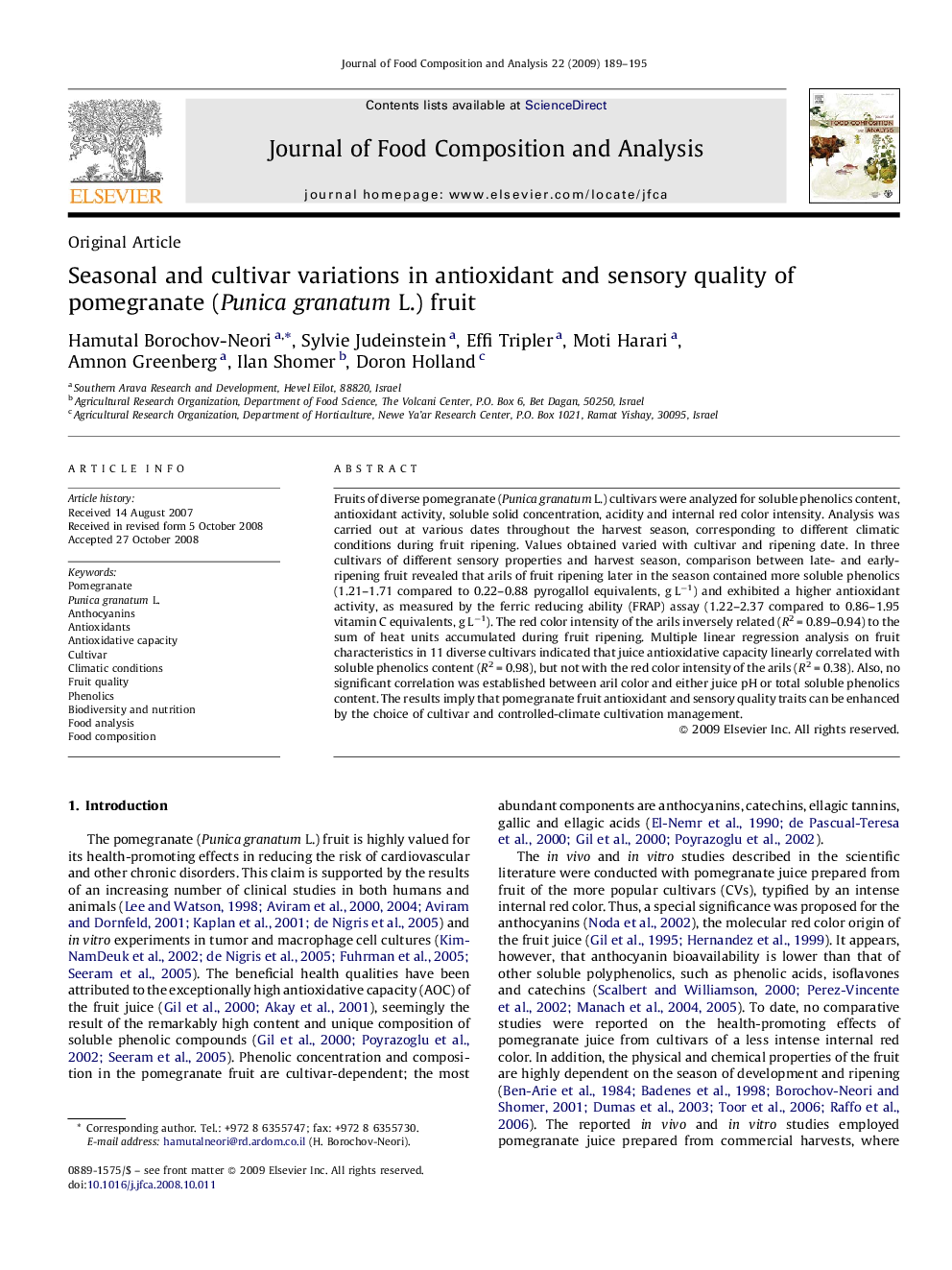| Article ID | Journal | Published Year | Pages | File Type |
|---|---|---|---|---|
| 1218815 | Journal of Food Composition and Analysis | 2009 | 7 Pages |
Fruits of diverse pomegranate (Punica granatum L.) cultivars were analyzed for soluble phenolics content, antioxidant activity, soluble solid concentration, acidity and internal red color intensity. Analysis was carried out at various dates throughout the harvest season, corresponding to different climatic conditions during fruit ripening. Values obtained varied with cultivar and ripening date. In three cultivars of different sensory properties and harvest season, comparison between late- and early-ripening fruit revealed that arils of fruit ripening later in the season contained more soluble phenolics (1.21–1.71 compared to 0.22–0.88 pyrogallol equivalents, g L−1) and exhibited a higher antioxidant activity, as measured by the ferric reducing ability (FRAP) assay (1.22–2.37 compared to 0.86–1.95 vitamin C equivalents, g L−1). The red color intensity of the arils inversely related (R2 = 0.89–0.94) to the sum of heat units accumulated during fruit ripening. Multiple linear regression analysis on fruit characteristics in 11 diverse cultivars indicated that juice antioxidative capacity linearly correlated with soluble phenolics content (R2 = 0.98), but not with the red color intensity of the arils (R2 = 0.38). Also, no significant correlation was established between aril color and either juice pH or total soluble phenolics content. The results imply that pomegranate fruit antioxidant and sensory quality traits can be enhanced by the choice of cultivar and controlled-climate cultivation management.
